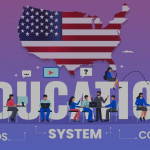1. Introduction to U.S. Support Programs
The U.S. government offers a wide array of support programs to assist citizens, low-income families, veterans, children, and individuals with disabilities. These cover necessities like food, healthcare, housing, utilities, education, employment, and moreUSAGovInvestopedia.
2. Major Federal Assistance Programs
Food & Nutrition
- SNAP (Supplemental Nutrition Assistance Program): Offers EBT-based food aid to low-income individuals and familiesSocial SecurityPew Research Center.
- WIC (Women, Infants, and Children): Supports pregnant or breastfeeding women and young children with food and nutrition guidanceSocial Security.
- Additional programs include school meal plans and emergency feeding assistanceSocial SecurityUSAGov.
Healthcare
- Medicaid: State-run healthcare coverage for low-income individuals, children, women, adults, and the disabledUSAHelloVerywell Health.
- CHIP: Provides coverage for children in families ineligible for MedicaidUSAHelloVerywell Health.
- Medicare: Federal healthcare for older adults (65+) and certain younger individuals with disabilitiesVerywell Health.
Income & Cash Assistance
- SSI (Supplemental Security Income): Cash support for older adults and disabled individuals with limited incomeWikipedia.
- SSDI (Social Security Disability Insurance): Benefits based on work history for disabled individualsUSAHello.
- TANF (Temporary Assistance for Needy Families): Time-limited cash assistance for families with children, often accompanied by work requirementsSocial SecurityPew Research Center.
Housing & Utilities
- Section 8 Housing Vouchers: Helps low-income renters afford housingUSAFacts.
- HOME & National Housing Trust Fund: Grants for low-income housing development and rental assistanceUSAFacts.
- LIHEAP: Energy bill assistance program for low-income households including heating/cooling helpWikipediaknowyourgovernment.net.
- Weatherization Assistance Program (WAP): Grants to improve home energy efficiencyknowyourgovernment.netWikipedia.
- Lifeline: Discounted phone and broadband for qualifying low-income individualsWikipedia.
Community & Employment Support
- CSBG (Community Services Block Grant): Funds local programs addressing poverty, spanning housing, education, health, and emergency aidWikipedia.
- Community Action Agencies (CAAs): Deliver multi-faceted local support, funded by CSBG and other sourcesWikipedia.
- AmeriCorps: Volunteer service program offering education awards, stipend, and benefits for service in community-focused projectsWikipedia.
3. Recent and Emerging Support Initiatives
- Guaranteed Income Pilot Programs:
- Alameda County, California: Offers $1,000 monthly unconditional payments to selected low-income families, plus financial coachingThe Sun.
- Similar initiatives in other states like Hawaii and Ohio continue to expand, though not universally adoptedThe SunBusiness Insider.
- State and Local Stimulus Payments:
- Education & Youth Support:
- $1.3 billion released by the U.S. Department of Education for after-school and summer programs after political backlashThe Times of India.
- Expansion of MIECHV (Maternal, Infant and Early Childhood Home Visiting), providing home-based early learning supportAP News.
- Food Stamp Program Reforms:
- A 2025 law expands work mandates in SNAP, potentially reducing benefits for 2.4 million low-income individualsThe Guardian.
- Aid Access Challenges:
- Analysis shows that bureaucratic hurdles in welfare programs hinder millions from accessing benefits—streamlining could cut poverty by up to 31%Vox.
4. Who Benefits—and How to Access Support
Federal support programs target groups such as:
- Low-income individuals and families
- Children, women, adults, and those with disabilities
- Veterans and displaced individuals
- Local community organizations supporting poverty relief
Accessing programs:
- Visit USA.gov/benefits to explore available aid and eligibilityUSAGov.
- Use tools like Benefits.gov to search by category or household needs.
- Contact local CAAs, public housing agencies, or state service departments for guidance.
5. FAQ (Frequently Asked Questions)
Q: How can I find programs I’m eligible for?
A: Start with USA.gov’s Benefit Finder or Benefits.gov to search by need—e.g., food, housing, healthcareUSAGovUSAHello.
Q: Is support uniform across states?
A: No—programs like Medicaid, TANF, SNAP, and LIHEAP vary significantly depending on state rules and resourcesUSAHelloWikipediaSocial Security.
Q: What’s the difference between SSI and SSDI?
A: SSI is need-based cash aid from general funds. SSDI is earned benefit based on your work recordWikipediaUSAHello.
Q: Are there programs that don’t require work, such as UBI?
A: Yes—some local guaranteed income pilots offer unconditional payments (e.g., Alameda County), though UBI isn’t nationwide yetThe Sun+1Business Insider.
Q: How do administrative hurdles impact help?
A: Complex processes deter many from accessing aid—streamlined systems could substantially reduce povertyVox.












